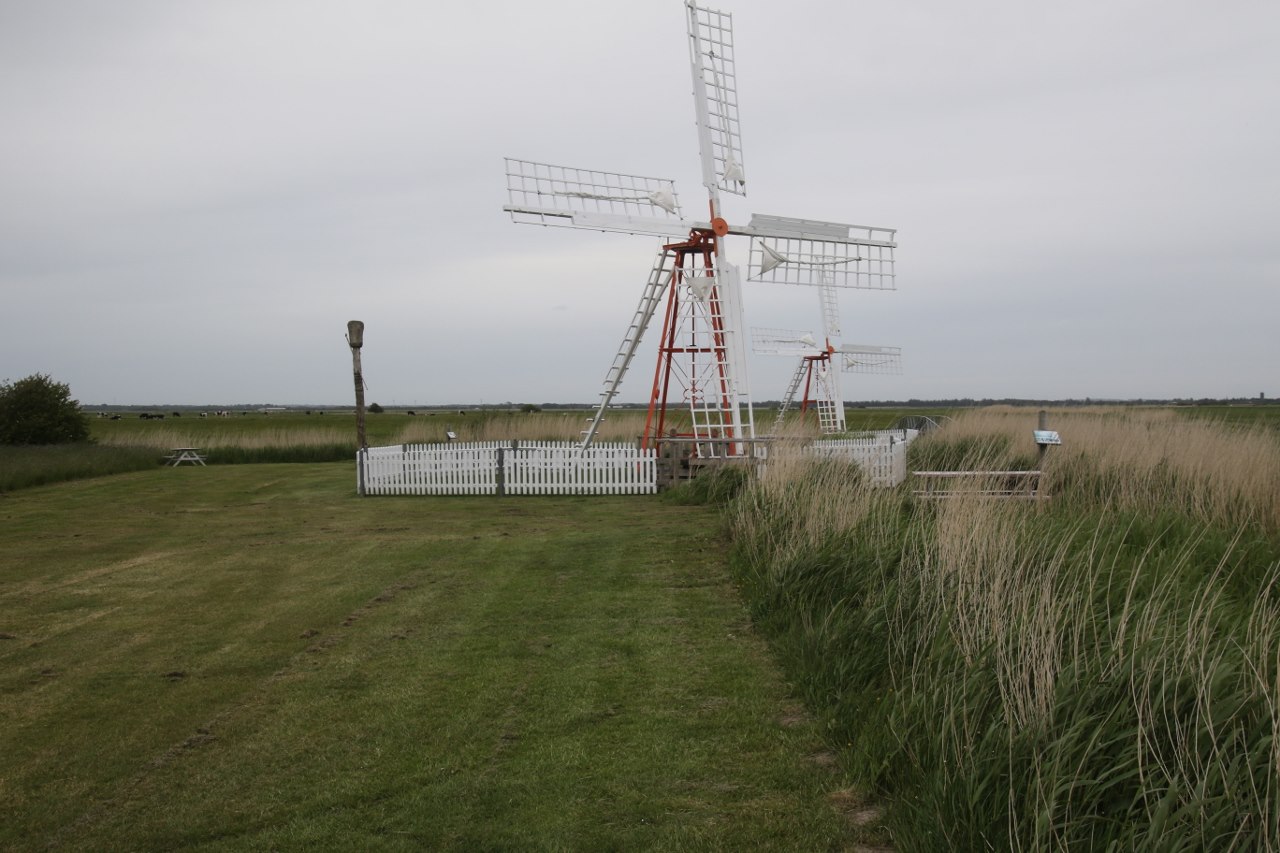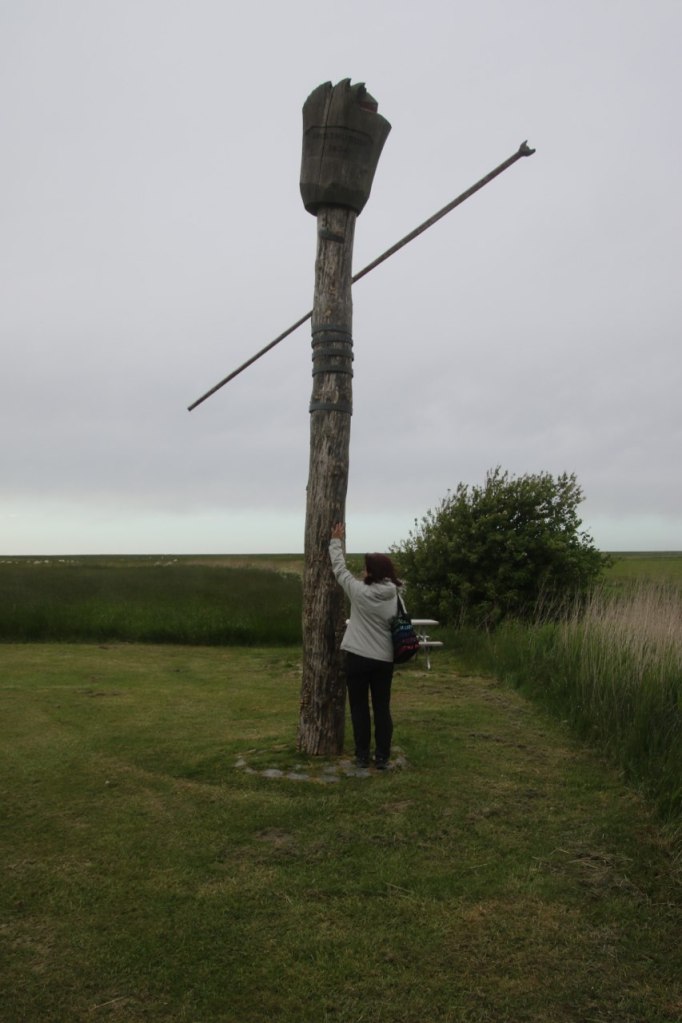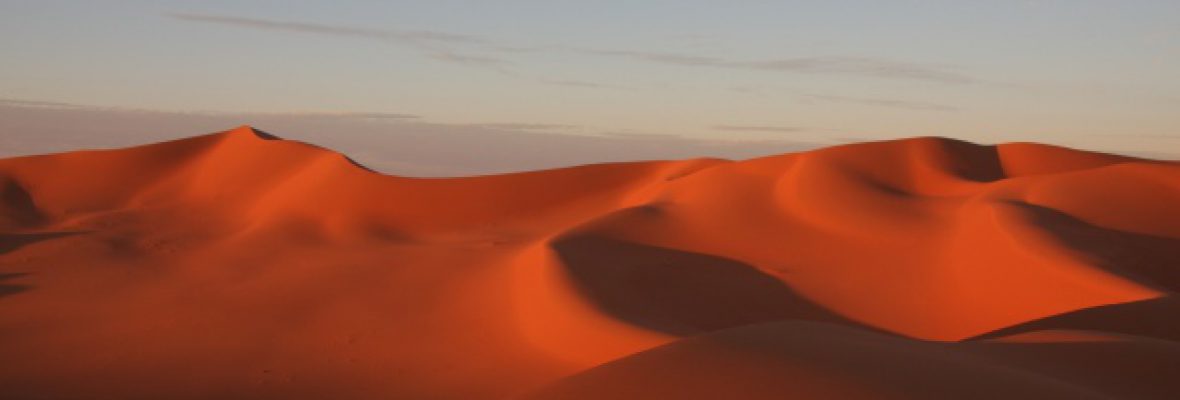We have been driving back forward along a road in west Jutland several times – and every time we drove this way I say a sign for the historic windmills a bit north of the series of villages with Ballum in the name. We hadn’t stopped so far but this time I had decided we should explore the historic windmills – not that I had any idea what they were all about.

There are two historic windmills which stand on the middle of some flat grass landscape and they look pretty small – not like the usual old windmills which has been used to grind flour. But these small windmills apparently wasn’t used for producing flour instead they are used to lift water.

The flat grassy area is pretty wet and can’t be used to growing any crops instead it is home to a lot of sheep’s which seems to enjoy the life on the fields with the nice fresh grass. During most of the year there are plenty of water for the sheep’s to drink but during the summertime it can occasionally be hot and dry and the sheep’s will no longer have access to water. Hence the windmills were necessary to lift the water up from a nearby stream so the sheep’s could get a drink.

The water is lifted by using a kind of screw which I think is an ancient invention which has been used in ancient Egypt and other places around the ancient cultures of the Middle East.



On the field is also a marker which shows the height of the water during the worst floods of the area. The top of the storm marker is a symbol which is a remainder of the great storm of 1634 which took away houses and farms. On the pole is a long stick – this is a symbol of the most important tool of the people who worked in the fields with the many small streams they constantly had to jump across during their daily work in the field.

The pole has markers of later storms which are showing the height – though the area hasn’t been flooded since 1920 when they had made the new dike a bit away.

Next to the mills is an old house which has been turned into a small museum about the windmills and the area. The exhibition is in Danish and only partly self-explanatory so I guess most people will have trouble with the exhibition.


Anything ancient is interesting but should be fully explained in the universal language; otherwise, it is a waste of a heritage.
LikeLiked by 1 person
There is no universal language – so you have to pick some you want to give information in.
LikeLike
There is a universal language of politics, commerce, academia, and tourism, it is English. No one will use any other language. A tourist guide speaking in Danish or Estonian, as an example, would not have anyone following his tour. I take it, you speak English on your tour, and not in any language you might fancy.
Am I right?
LikeLiked by 1 person
No you are wrong. I didn’t go on s tour and if I had been on tour of this area the langbane surely wouldn’t have been english. It would most likely be Danish or German with Dutch as a distant third most likely language ☺
LikeLike
If that is the case the place must be overrun by tourists. I could not see any in all your posts unless you counted the sheep. I thought that you organize worldwide tours, are you not? If you do, then you have to speak
English otherwise even if they all come from Denmark, they would rely on you to understand everything in New York or London or Singapore. All the scientific research in Denmark is published for international use in English.
No one is listening in the United Nation to a representative of Denmark without his speech being authomaticaly translated in English. We have to agree to disagree.
LikeLiked by 1 person
I only travel on my own not organisk for other.
LikeLike